The JPB Environmental Health Fellowship Program
A new generation of compassionate research scholars committed to solving complex environmental health challenges from multiple perspectives
Phone
617-384-8825
Location
Department of Environmental Health
401 Park Drive, 4th Floor WEST, 404N
Boston, MA 02215
Research
The Fellowship has funded more than 50 research projects, advancing our understanding of the social and environmental factors affecting health in under-resourced communities in the fields below.
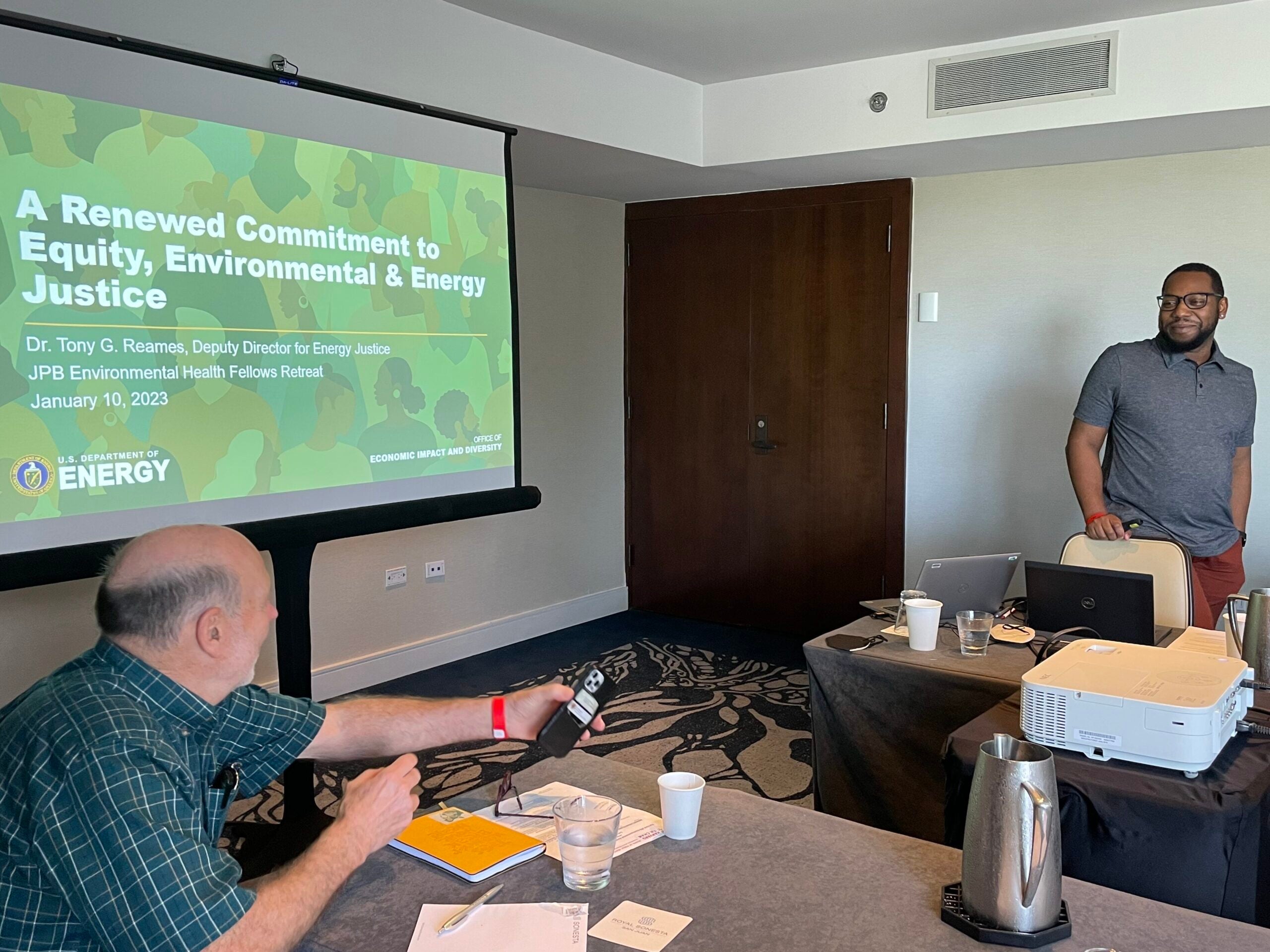
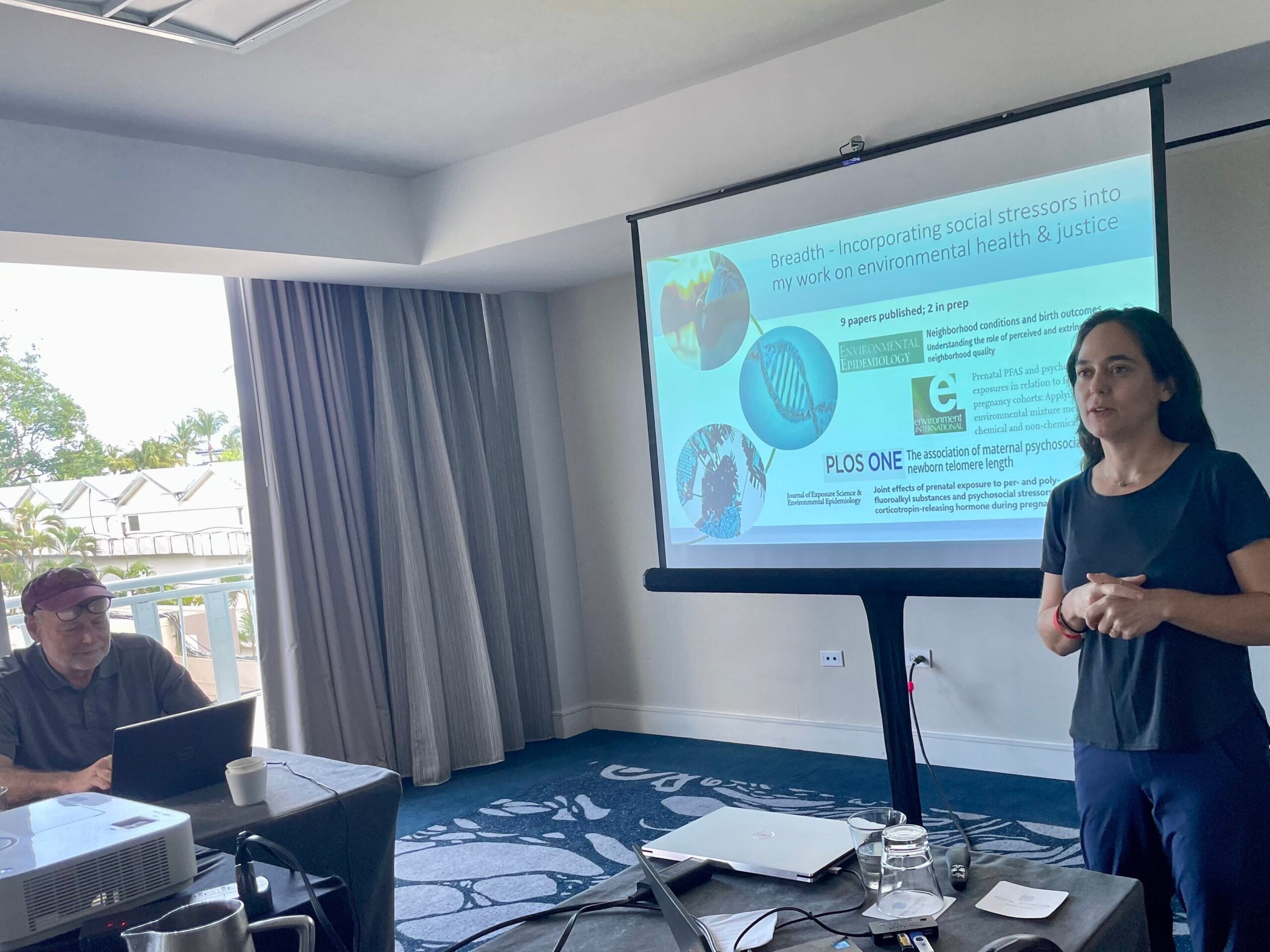

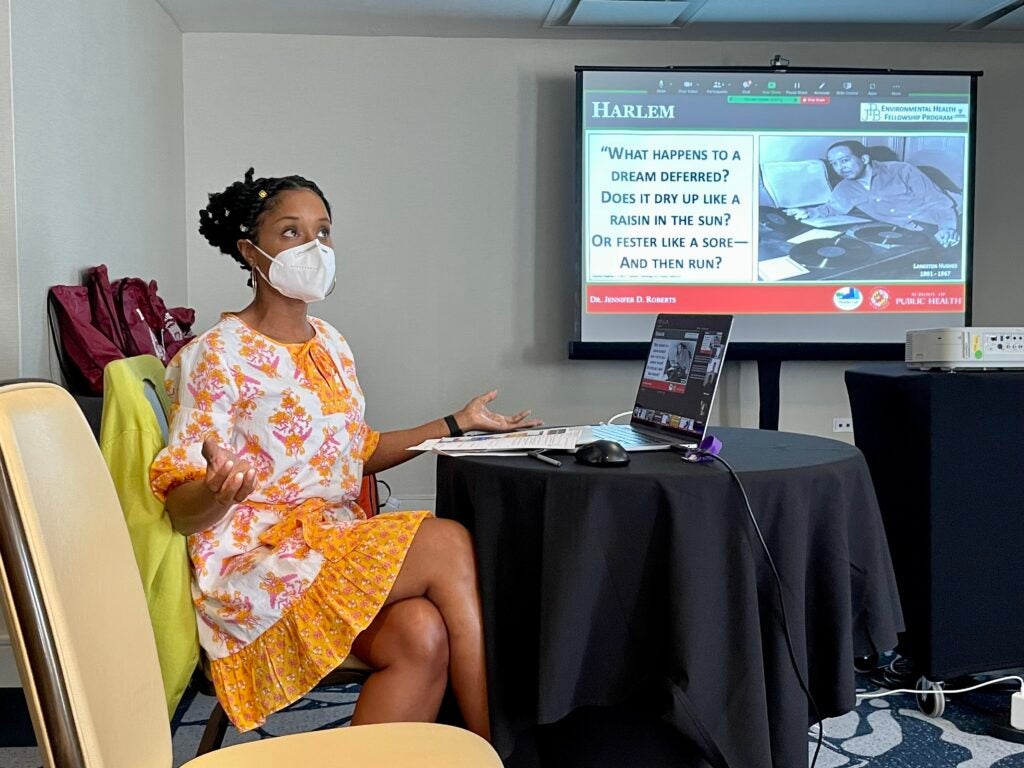
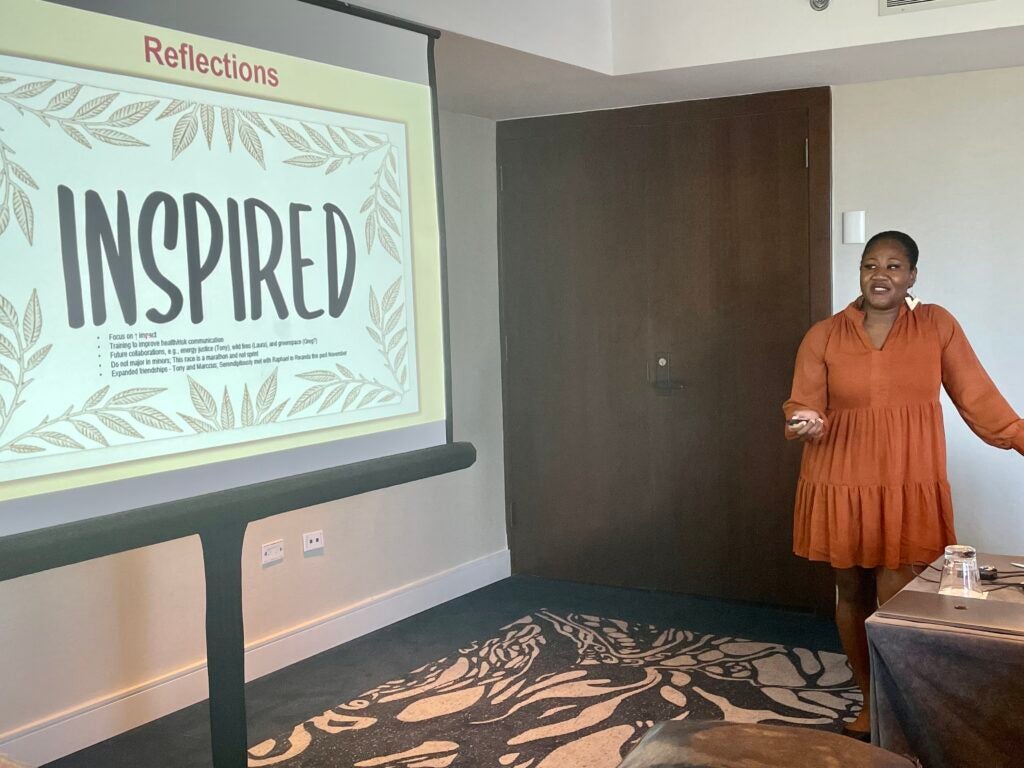
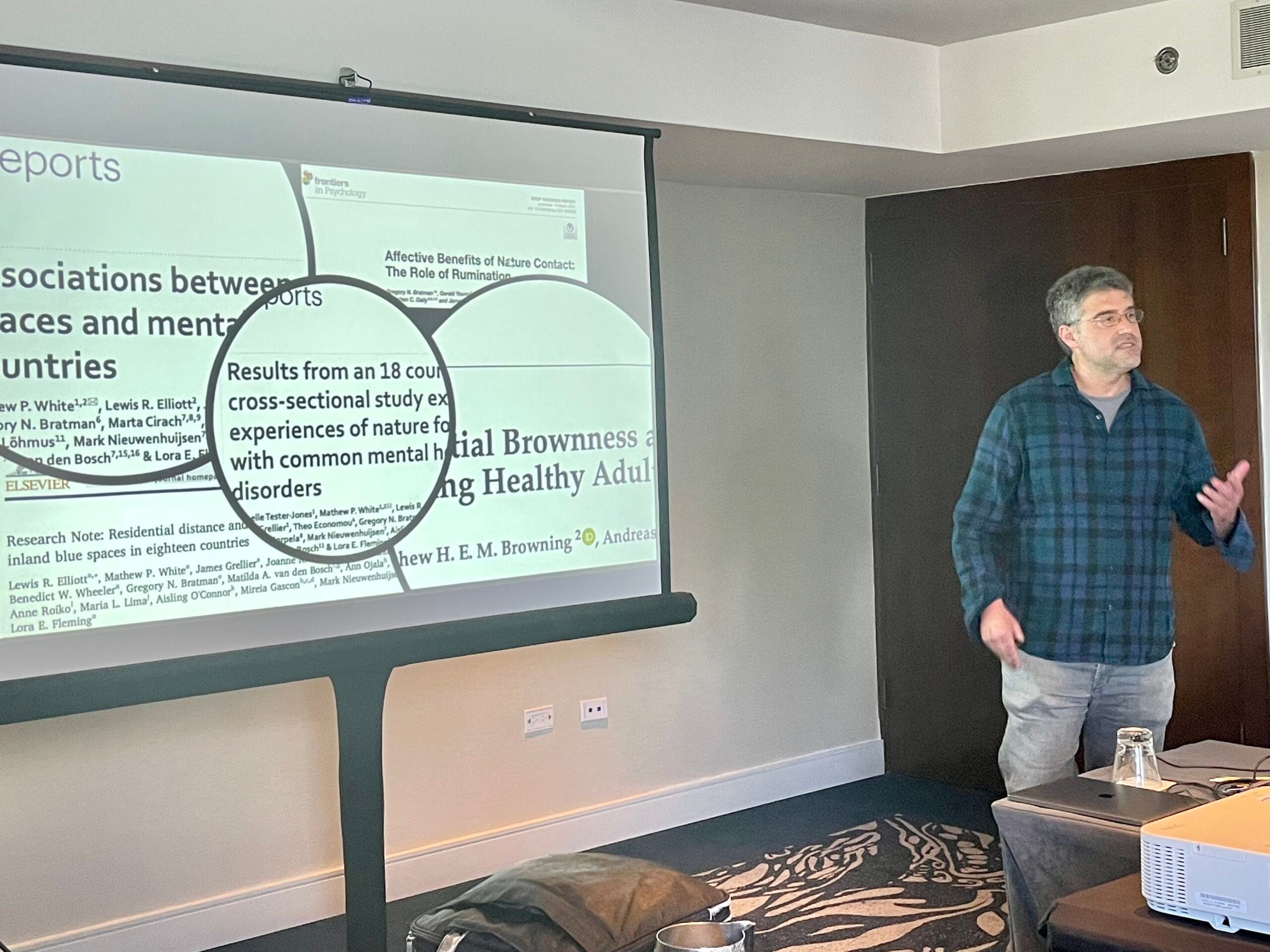
Current Projects
- Extreme heat, associated adverse health outcomes, and barriers to heat-health protective behaviors in restaurant and service workers and managers in Philadelphia, PA, Fellow Leah Schinasi. Examining the effects of heat exposure on indoor workers, particularly food service workers in Philadelphia, to develop interventions and protective standards.
- Food, Energy, and Water Insecurity in the Context of Compounding Disasters, Fellow Anais Roque. Studying the interconnected challenges of food, energy, and water insecurity amid compounding disasters to inform emergency management and public health response policies.
- PFAS exposures, social factors, and bioactive lipid pathways to estimate antecedent risk profiles of depressive symptoms, Fellow Max Aung. Investigating economic and health impacts of perinatal mood disorders in the US, exploring the relationship between prenatal PFAS exposure and depression risk, focusing on bioactive lipids’ role in nervous system function.
- A mechanistic basis for the short-term exposure effects of UFP on cognitive function, Fellow Jose Cedeno Laurent. Examining how short-term exposure to ultrafine particulate matter (UFP) impacts cognitive function in high-risk occupational settings and proposing an intervention trial to assess cognitive improvement by reducing UFP exposure.
- Testing efficiency and accessibility using a novel bone lead test, Fellow Aaron Specht. Enhancing lead testing in Indianapolis by introducing efficient and accessible bone lead tests, investigating various lead sources to comprehensively address the issue.
- Cross-sectional study assessing sociopolitical stress, Fellow Stephanie Eick. Measuring sociopolitical stress and its effects on mental health and birth outcomes among diverse pregnant and reproductive-age women in Atlanta, following recent US legislative changes impacting reproductive autonomy.
- Race/Ethnicity and nativity disparities in gestational diabetes mellitus, Fellow MyDzung Chu. Investigating influences on gestational diabetes mellitus (GDM) risk, particularly focusing on racial/ethnic and nativity disparities, exploring social and environmental factors’ impact on Asian and immigrant women.
- Legacy effects of historical redlining on Black maternal life course heavy metal exposure and maternal-infant health, Fellow Betty Lin. Exploring racial disparities in maternal and infant health among Black individuals in the US, investigating underlying determinants and intergenerational consequences of stress exposure on health.
- The role of environmental reparations in mitigating environmental racism, Fellow Yoshira Ornelas. Assessing the impact of environmental reparations on communities disproportionately affected by environmental injustice to address health inequities.
- Exposure to heavy metals among Indigenous people who inject methamphetamine, Fellow Michael Anastario. Examining health risks of injecting methamphetamine, particularly concurrent exposure to heavy metals like lead and mercury, utilizing non-invasive X-ray fluorescence for on-site assessment among 100 Fort Peck Tribal members to prioritize harm reduction.
- Optimizing Filtration Techniques for Reducing Heavy Metal Exposures in Injection Drug Use: A Factori al Experimental Approach, Fellow Michael Anastario. The goal of this project is to identify the most effective filtration technique for removing heavy metals from injection preparations and to explore the development of innovative filter designs for injection drug use in collaboration with a biomedical engineer.
- Potential adverse impacts of vaping on perinatal health in women who use e-cigarettes during pregnancy, Fellow Ruzmyn Vilcassim. Evaluating the adverse effects of vaping on perinatal health by comparing biomarkers in pregnant women who vape with those who do not.
- Point – of – use Treatment from the Perspectives of Water Quality Tradeoffs and Human Behavior, Fellow Katherine Alfredo. The goal of this project is to advance the science of activated carbon block point-of-use (POU) filters by using a user-informed approach to fundamental research.
- Evaluating social, economic, and environmental vulnerabilities in US community water systems using a cumulative risk metric, Fellow Katherine Alfredo. The goal of this project is to assess whether cumulative risk from regulated and unregulated contaminants—measured through Relative Health Indicators (RHI), Socio-Environmental Exposures (SEE), and plumbing-related risks—can be used to predict water aversion behavior in communities served by community water systems (CWS).
- Water insecurity framework, Fellow Na’Taki Osborne Jelks. Developing a comprehensive framework to address water insecurity’s impact on Black communities in the US, aiming to inform interventions and policy changes for equitable access to clean water.
- Building Community Air Quality Research Capacity in the Mississippi Delta, Fellow Courtney Roper. Investigating air quality in the Mississippi Delta region and its health relevance to address health disparities caused by heightened exposure to air pollutants.
Past Projects
Cohort II
- A Multimethod Approach to Assess Sanitary Risks and Microbial Exposures Associated with Waterborne Illnesses and Infrastructure Management in Baltimore, Maryland, Marccus D. Hendricks. This study utilized a multimethod approach to assess sanitary sewer overflow (SSO) and associated risks, including exposure to bacteria in Baltimore neighborhoods, addressing deficiencies in stormwater and sanitation infrastructure and their impact on public health.
- Gauging Effects of Neighborhood Trends and Sickness (GENTS) Study: Examining the Perception of Transit-Induced Gentrification in Prince George’s County, Jennifer Roberts. This study aimed to evaluate the impact of transit-induced gentrification (TIG) related to the opening of the Purple Line (PL) light rail transit in Prince George’s County, Maryland, on health outcomes and social determinants of health (SDOH) among residents.
- Going Social! Parks at the Nexus of Community Transformation and Public Health, Veniece Jennings and Jennifer Roberts.
Cohort II
- National Energy Insecurity Study, Diana Hernandez. A comprehensive, multi-site investigation of energy insecurity in the U.S. The key objectives of the project were: 1) Analyzing demographic and geographic data of energy-insecure households, focusing on cumulative risks and temporal variance. 2) Conducting in-depth interviews with affected households in 10 sites for experiential insights. 3) Developing and validating an energy insecurity index, incorporated into the “Energy Insecurity and Health Survey” administered to a 2,400-household internet panel at two time-points. The study explored links between energy insecurity and adverse health outcomes.
Cohort II
- Environmental exposures in the home environment and COPD exacerbation, Raphael Arku. COPD (Chronic obstructive pulmonary disease) is a leading cause of death in the U.S., with significant healthcare costs mainly attributed to hospital readmissions from exacerbations, yet limited research exists on preventable environmental triggers, particularly in the home environment. The long-term goal of this project is to identify and intervene on factors in the home environment that may exacerbate COPD, aiming to improve patient quality of life and reduce healthcare costs.
- Assessing Capacity for Deployments of Data and Technology in Public Engagements with Oil and Gas Pipeline Projects, Kirk Jalbert. The study aimed to investigate advocacy coalitions’ technical practices concerning oil and gas pipelines, exploring how these practices inform legal and political campaigns and shape members’ understanding of environmental and public health issues, potentially paving the way for more informed public engagement in regulatory processes and mitigating risks associated with large-scale infrastructure projects.
- Assessing Landowner Perceptions of Environmental and Public Health Risks When Signing Easements Agreements for Oil and Gas Pipelines, Kirk Jalbert and Katie Dickinson.
Cohort I
- Energy, Environment and Health in Affordable Housing Development, Chunrong Jia
- Indoor VOC Exposure and Home Energy Insecurity in an Environmental Justice Community, Chunrong Jia
- The Role of Environmental Exposure Reduction (REER) in a Multicomponent Asthma Intervention, Chunrong Jia. Dr. Jia determined the effectiveness of a home intervention program in reducing asthma for urban children. Dr. Jia aimed to understand how major environmental factors influence asthma interventions.
- Identifying community needs and developing emergency response strategies for coastal fishing communities impacted by harmful algal blooms, Stephanie Moore. The impacts of harmful algal blooms (HABs) on human communities are growing, including health risks, economic losses, and cultural disruptions. Stephanie studied the 2015 bloom along the US West Coast, which led to significant economic setbacks from fisheries closures. Her research focused on documenting the social, cultural, and economic effects and identifying strategies to help coastal communities build resilience against future blooms, preserving their livelihoods, traditions, and economies.
- Prevalence and Risk Factors for Chronic Kidney Disease of Non-Traditional Etiology in the US, Madeleine Scammell. Examining a large national dataset of health records, Dr. Scammell attempted to characterize the prevalence of chronic kidney disease, and risk factors, among people under age 60 with no prior diagnoses or conditions known to cause kidney disease. She also collaborated with researchers at the University of New Mexico to examine kidney disease and environmental exposures in a Native American community.
- Methane Leaks and Tree Health, Madeleine Scammell.
- Nuts and Olestra for Persistent Organic Pollutant Reduction (NO POPs), Jose Suarez. The objective of this study is to conduct a preliminary estimate of whether diets that include nuts or olestra can enhance the excretion of persistent organic pollutants (i.e. organochlorine pesticides, PCBs and PBDEs) among older adults in San Diego, CA. Currently, there is not an established treatment to enhance the excretion of these chemicals which are commonly found in the general US population and are strongly associated with type-2 diabetes.
Cohort I
- Indigenous environmental Health Science Study in collaboration with the Blackfeet Community College, Annie Belcourt. This study examined the relationships between social and cultural resources, environmental exposures, and the mental and cardiovascular health of American Indians. Also, the study looked at metabolic syndrome — increased blood pressure, a high blood sugar level, excess body fat around the waist and abnormal cholesterol levels — which increase the risk of heart disease, stroke and diabetes.
- Community-Defined Monitoring, Impact Assessment, And Engagement Associated with Refinery Source Exposure: Swinomish Partnership To Promote Environmental Public Health Science, Annie Belcourt. This project created local capacity in the Swinomish Nation to monitor, detect, and map exposures and health effects from toxic air pollutants. The Swinomish Nation homelands houses two refineries that release large quantities of toxic air pollutants. This project also promoted public health dissemination methods for rapid response to future accidental releases.
Cohort II
- Debts & Reciprocity vs. Deficits & Harms: Developing EJ Communication Tools to Catalyze Action, Sara Wylie, Cohort I, and Katie Dickinson. This project aimed at developing and piloting environmental justice (EJ) communication tools in Massachusetts and Colorado to assess their effectiveness in changing attitudes and inspiring action, particularly targeting individuals in “low environmental risk” communities. These tools, focusing on the interconnectedness of communities and the distribution of risks and benefits, will be compared with traditional “harms-focused” maps.
- Critical Infrastructure Criminalization Bills, Kirk Jalbert.
- The Haves, the Have-Nots and the Health of Everyone: Spillover effects of racism on environmental health outcomes in the Nurses’ Health Study
Cohort II
- Exploring the Use of a Low-Cost Photopaper Tool for Citizen Science Detection of Urban Gas Leaks, Sara Wylie and Kirk Jalbert. This project explored the feasibility of using a low-cost photopaper tool to detect urban gas leaks, investigating both scientific and social dimensions to empower grassroots climate justice activists in documenting and addressing gas leak issues.
- Developing, Validating and Distributing a Low-Cost Tool for Community Mapping of Hydrogen Sulfide with Photographic Paper Study. Sara Wylie designed, developed, and validated a low cost way for communities to map their exposure to hydrogen sulfide from oil and gas production. She assessed whether visual data is more readily interpretable for communities, policy makers, and other non-experts.
- Open Water Data-Community Visualization of Clean Water Act Violations Project, Sara Wylie.
Cohort II
- Improving Assessment of Residential Exposures for Home Energy Efficiency and Health Studies, Ellison Carter. This project aimed to evaluate housing interventions’ effectiveness in improving health outcomes by addressing barriers in measuring and modeling home-based exposures, thus informing future housing policy and investments in the United States.
- Exploring Associations between Temperature Exposure, Housing Quality, and Health During the Winter in Energy Poor Households, Tony Reames. This study investigates the impact of chronic energy poverty on the physical and mental health of low-income households in southeast Michigan, examining indoor temperature exposure during winter, energy efficiency of homes, and associated health outcomes to inform policies addressing energy insecurity.
- Housing Policy as Public Health Policy: Building a Community-Engaged Impact Evaluation of Denver’s Sun Valley Public Housing Redevelopment Project, Katherine Dickinson. This project aims to investigate the long-term impacts of the Sun Valley public housing redevelopment project in Denver, which is part of the Choice Neighborhoods Initiative (CNI) grant awarded by the US Department of Housing and Urban Development (HUD). By conducting rigorous impact evaluations, the research agenda seeks to understand how housing policy, specifically through CNI investments, can influence social determinants of health and overall social and health outcomes for vulnerable populations.
- Understanding Eviction Among HUD-Assisted Elderly, Leah M. Lozier
Cohort I
- Developing a Unified Home Assessment Tool, Kofi Berko. Dr. Berko developed a unified home assessment tool that assesses all possible hazards in the home environment. The tool will also evaluate the energy and water use efficiency of the residential unit. Dr. Berko developed indices that estimate the relative ease of remediating each hazard and the corresponding health impact on the residents. Dr. Berko’s worked greatly help researchers and others interested in assessing, prioritizing and mitigating home hazards.
- Beyond Implementation: Evaluating Compliance and Refining Enforcement of Smoke-free Housing Policy in Low-income Multiple Unit Housing Settings Study. Diana Hernández evaluated compliance of smoke-free policies and effects on residents health in low-income multiple unit housing. Diana Hernández work informed other larger studies throughout New York City and other cities as public housing nationwide will transition to smoke-free. This research was the first known study to assess indoor smoking and secondhand exposure before and after the construction phases of the RAD conversion.
- Energy, Environment and Health in Affordable Housing Development, Chunrong Jia and Diana Hernandez. Energy efficiency and indoor environmental quality were examined in different phases of newly developed/retrofitted affordable residences to measure impacts on energy security and health. It built research capacity among a critical group of stakeholders consisting of researchers, architects, community-based practitioners, and residents in the low-income housing sector.
- Establishing a “Birth Cohort” of Homes: Investigating Changes in VOC Composition of Indoor Air in New Housing as it Becomes Occupied, Chunrong Jia.
Cohort I
- Albany Infant and Mother Study (AIMS), Allison Appleton. This project aimed to determine if toxicants and stress in pregnant mothers can together explain the low birth weight of their infants in disadvantaged communities in the Albany area.
Cohort II
- Nature exposure, mental health, and equity: a multi-method approach, Greg Bratman. Investigating the potential buffering effect of nature exposure on the negative mental health outcomes associated with childhood adversity, this study provides a crucial step towards understanding how nature exposure may mitigate stressors and promote mental well-being.
- Understanding the roles of objective versus perception of green space exposure on stress and mental health, Colleen Reid. This project aimed to elucidate the impact of objective versus perceived green space exposure on stress and mental health, addressing a gap in research by examining whether perceived or objective measures better predict health outcomes associated with green space exposure.
Cohort I
- Nature Contact, and Health Inequities, Hector Olvera.
Cohort I
- Assessing the Role of Occupation on Home Exposures in a Disadvantaged Community, Diana Ceballos. Minority workers, especially immigrants with low English proficiency or education, often face higher injury risks and are more likely to work in hazardous jobs, potentially bringing harmful chemicals home from work. This study examined the link between occupational and home exposures in a high-risk community by assessing take-home contamination of metals and SVOCs, including PCBs. Collaborating with MassCOSH, Dr. Ceballos’ team trained participants to reduce these exposures and referred them for biomonitoring to verify workplace-related contamination..
Cohort II
- A social network investigation of fisheries stakeholder organizations’ social media activity on the topic of sustainable fisheries in the Northeast United States, Matt Cutler and Kirk Jalbert. This pilot study aimed to explore the dynamics of interactions among various stakeholder organizations involved in promoting sustainable fisheries management in the Northeast United States. Using social network analysis of social media behavior, the project sought to understand how these organizations, spanning academic, governmental, industry, and non-profit sectors, interact and influence fisheries management direction and public attitudes toward sustainable fisheries.
Cohort II
- From the city to the cell: neighborhood determinants of adverse birth outcomes, Lara Cushing. Exploring the joint effects of environmental pollutants and psychosocial stressors on adverse birth outcomes, this project utilizes comprehensive data to evaluate the cumulative impact of neighborhood-level factors on perinatal health, contributing new knowledge to address racial disparities in birth outcomes.
- Supporting Collaborative Science to Measure Impacts of the Marshall Fire, Katie Dickinson and Colleen Reid. Following the Marshall Fire in Colorado, this proposal investigated the fire’s impacts and recovery process. The project aimed to inform local recovery efforts and resilience policy decisions while building scientific infrastructure to respond to future climate-related disasters.
Cohort I
- Environmental Health Interactions: Examining the Effect of Air Pollution, Stress and Socioeconomics on Cardiovascular Health, Christina Fuller. Dr. Fuller examined the relationship between air quality and stress among a Boston Puerto Rican population, whom are at increased risk for cardiovascular disease. Her work helps to understand the disparities affecting cardiovascular health.
- Life stress, particulate matter exposure, and inflammatory reactivity, Hector Olvera.